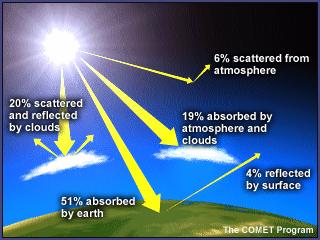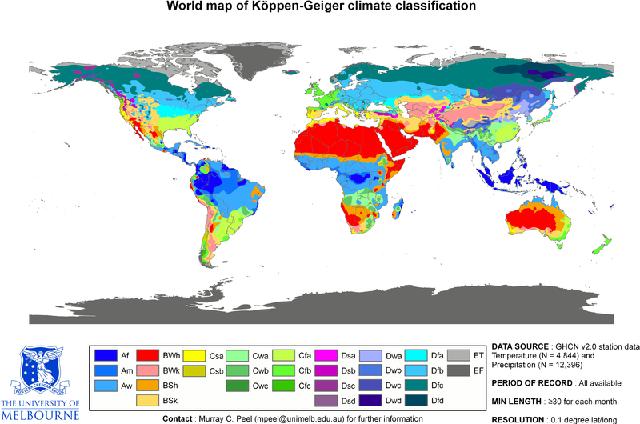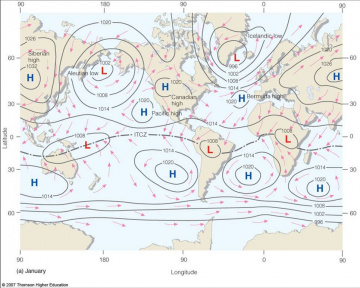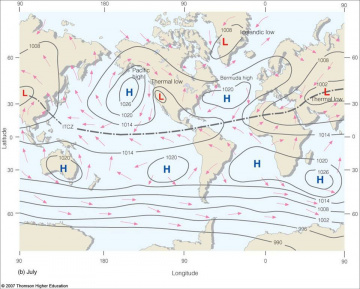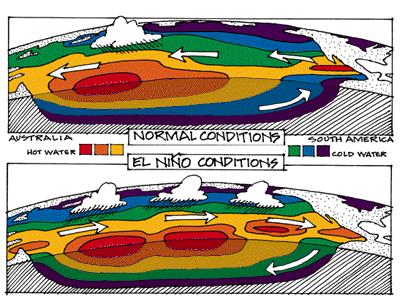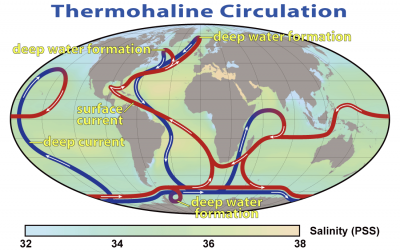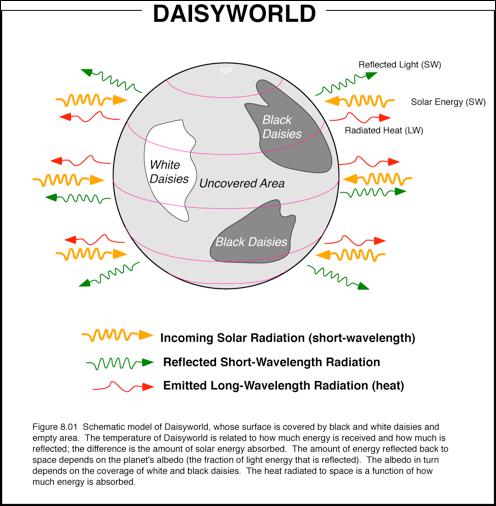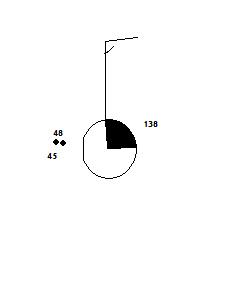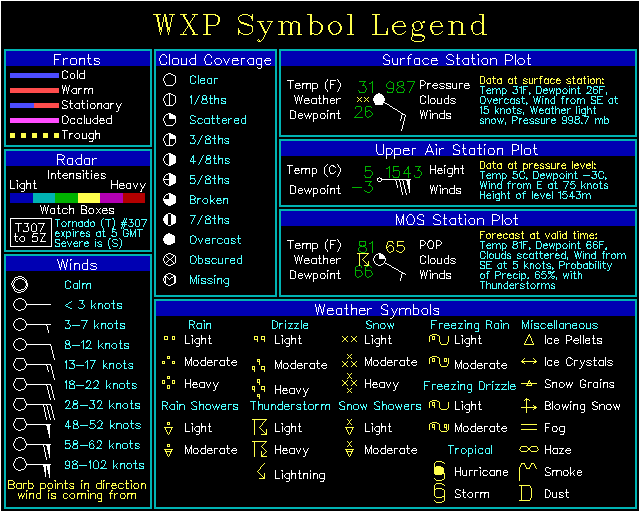Meteorology/Climate
| Meteorology/Climate | |||||||
|---|---|---|---|---|---|---|---|
| Type | Earth Science | ||||||
| Category | Study | ||||||
| Event Information | |||||||
| Latest Appearance | 2022 | ||||||
| Forum Threads | |||||||
| |||||||
| Question Marathon Threads | |||||||
| |||||||
| Division B Results | |||||||
| |||||||
Meteorology is a weather and climate based event designed to test students' understanding of meteorological concepts. Its topic changes every year between Climate, Everyday Weather, and Severe Storms. A basic knowledge of general Meteorology concepts, in addition to a deeper understanding of climate principles, is recommended for studying this topic.
This page refers to the 2009, 2012, 2015, 2018, and 2022 topic of Meteorology. For a brief review of climate information, see Climate Notes.
Resources
The event allows for two front-back note sheets per team and two non-graphing calculators dedicated to computation for each competitor.
Personal resources for studying prior to the competition are not restricted. It is recommended to have a meteorology textbook that has information about all three topics, so that it is useful even after the event's topic changes. Other, more specific and advanced textbooks can also be useful to experienced participants. A useful tactic for studying is looking up topics on Google to get familiar with some subjects before going more specific. Wikipedia and other online encyclopedias are also useful for this purpose.
Topics for Climate
- Weather vs. climate
- Composition and evolution of Earth's atmosphere
- Earth's radiative energy balance
- Oceanic and atmospheric circulation mechanisms
- Climatic zones
- Recent climate trends
- Climate reconstructions
- Future changes in climate
These topics are highly recommended for studying, although not all questions will fall into any of the above categories. Often, tests will ask competitors to interpret different forms of charts, graphs, and tables.
Weather and Climate
Climate describes a location’s composite or average weather over long periods of time. The climate of a location is determined by the state of and interactions between different components of Earth's climate system.
The climate system consists of four interconnected components: the atmosphere, hydrosphere, lithosphere, and biosphere. The atmosphere consists of the gases surrounding the planet's surface. The hydrosphere is the collection of all water on the planet, including bodies of water, water vapor, clouds, and glaciers. The lithosphere is the solid component of the planet, including rocks, soils, and landforms. The biosphere is the sum of all living organisms and biological systems on the planet.
Weather vs. Climate
Weather is usually defined as a day-to-day measurement. This includes temperature, precipitation, clouds, fronts, etc. Climate is basically long-term weather, or what causes weather. For example, the statement "today's high temperature is 71 degrees Fahrenheit" refers to weather, while the statement "the average high temperature for August is 82 degrees Fahrenheit" refers to climate.
Quantitative Description
The climate for a location can be described quantitatively in a number of ways, including as follows:
- Average Daily Temperature - average of daily high and low
- Average Monthly Temperature - average of the ADTs of a month
- Yearly Average Temperature - averaging the 12 AMTs
- Daily Temperature range - difference between the day’s high and low.
- Yearly Temperature Range - difference between the average of the warmest and coldest month
Climate Change
Also see Ecology#Global Warming for more information
Climate change is defined as the change in weather patterns over an extended period of time. Factors that can determine and affect climate are called forcing mechanisms. Forcing mechanisms can be further classified as either internal or external.
Internal vs. External Forcing
Internal forcing mechanisms are factors within Earth's climate system (the atmosphere, hydrosphere, cryosphere, lithosphere, and biosphere) with the lithosphere limited to only surface formations. Examples of internal forcing mechanisms include changes in the oceans (such as El Niño-Southern Oscillation and variation of thermohaline circulation) and biological processes (such as the mass introduction of oxygen into the atmosphere by photosynthetic organisms).
External forcing mechanisms are factors that are independent from the Earth's climate system or involve the subsurface lithosphere. External forcing mechanisms include changes in Earth's orbit, variations in the amount of energy being output by the Sun, volcanic activity, movement of tectonic plates, and human activities.
Feedback
Forcing mechanisms often set feedback systems into motion, one of which being the Sea Ice-Albedo Loop. The Sea Ice-Albedo feedback is a positive feedback climate process where a change in the area of snow-covered land, ice caps, glaciers or sea ice alters the albedo. This change in albedo acts to reinforce the initial alteration in ice area. Cooling tends to increase ice cover and hence the albedo, reducing the amount of solar energy absorbed and leading to more cooling. Conversely, warming tends to decrease ice cover and hence the albedo, increasing the amount of solar energy absorbed, leading to more warming.
History of Climate Science
Important Events in Climate Science
|
Earth's Atmosphere
The atmosphere is perhaps the most important component of the climate system; a location's climate is usually described in terms of the typical state of the atmosphere.
Composition
The composition of gases in the Earth's atmosphere, by volume, is approximately as follows:
- Nitrogen-78.08%
- Oxygen-20.95%
- Argon-0.93%
- Carbon Dioxide-0.038%
- trace amounts of other gases such as neon, helium, and methane
These gases make up what is referred to as the dry atmosphere, meaning that water vapor is excluded. In the real atmosphere, water vapor may be found at concentrations between near 0% to as high as roughly 4%, with the highest concentrations found near the equator, and the lowest values near the poles. As the concentration of water vapor increases, the relative concentrations of the gases of the dry atmosphere decrease slightly.
Evolution
The modern atmosphere is sometimes referred to as Earth's "third atmosphere", in order to distinguish the current chemical composition from previous compositions. The original atmosphere (about 4.6 billion years ago) was primarily helium and hydrogen. Heat from the still-molten crust, the sun, and a probably enhanced solar wind, dissipated this atmosphere. About 4.4 billion years ago, the surface had cooled enough to form a crust. It was heavily populated with volcanoes, which released steam, carbon dioxide, and ammonia. This led to the early "second atmosphere", which was primarily carbon dioxide and water vapor, with some nitrogen but virtually no oxygen. This second atmosphere had approximately 100 times as much gas as the current atmosphere, but as it cooled water vapor precipitated out to form oceans, and much of the carbon dioxide was dissolved in the seas and precipitated out as carbonates. The later "second atmosphere" contained largely nitrogen and carbon dioxide. It is generally believed that the greenhouse effect, caused by high levels of carbon dioxide and methane, kept the Earth from freezing. The oxygen-nitrogen atmosphere that we have now is the "third atmosphere". The oxygen in the third atmosphere resulted from photosynthesis, starting with anaerobic bacteria approximately 3.5 billion years ago. Between 200 and 250 million years ago, up to 35% of the atmosphere was oxygen (as found in bubbles of ancient atmosphere preserved in amber), but this percentage has dropped to what it is today.
Greenhouse Gases
The greenhouse effect occurs when certain gases in the atmosphere absorb and re-radiate outgoing longwave (terrestrial) radiation, thereby making the Earth warmer. These gases are called greenhouse gases for their direct role in it. Greenhouse gases occur naturally; however, their increasing atmospheric concentrations due to human activity is the primary cause of human-induced climate change.
The relative "strength" of a greenhouse gas is often described using a quantity known as global warming potential (GWP), which compares the absorption of longwave radiation by a gas to that of an equivalent amount of carbon dioxide over some time frame. The global warming potential of a greenhouse gas depends on both how efficiently it absorbs longwave radiation and how long the gas remains in the atmosphere (its "lifetime"). By definition, the global warming potential of carbon dioxide over any time frame must be equal to 1.
| Gas | 20-year GWP | 100-year GWP | 500-year GWP |
|---|---|---|---|
| Carbon Dioxide | 1 | 1 | 1 |
| Methane (non-fossil fuel) | 79.7 ± 25.8 | 27.0 ± 11 | 7.2 ± 3.8 |
| Nitrous Oxide | 273 ± 118 | 273 ± 130 | 130 ± 64 |
| CFC-11 | 8321 ± 2419 | 6226 ± 2297 | 2093 ± 865 |
When the concentrations of these gases in the atmosphere are accounted for, and they are ranked by their contribution to the greenhouse effect, the most important greenhouse gases are:
- Water vapor, which contributes 36–70%
- Carbon dioxide, which contributes 9–26%
- Methane, which contributes 4–9%
- Ozone, which contributes 3–7%
- Nitrous oxide, which contributes 2–4%
Aerosols and Particulates
An aerosol is a suspension of a solid or liquid particle within a gas. Important aerosols in the atmosphere include sulfate and black carbon aerosols. Particulates are solid particles suspended in the air. Ejections of particulates from volcanic eruptions can have a significant effect on short-term climate. While technically different, the terms "aerosol" and "particulate" are frequently used interchangeably.
Sulfate aerosols consist of solid or liquid particles containing the sulfate ion. They occur naturally as a result of ocean sea spray; however, most sulfate aerosols result from human burning of sulfur-containing fossil fuels. These aerosols are very reflective, and as a result can directly impact climate by reflecting incoming solar radiation. Sulfate aerosols can also indirectly affect climate by acting as cloud condensation nuclei, resulting in more clouds or clouds with different properties. Both the direct and indirect effects of sulfate aerosols have a cooling effect on atmospheric temperatures. The aerosols also have short atmospheric lifetimes (on the order of days), and as a result their effects on climate are greatest near the locations where emissions of sulfurous compounds occur.
Large volcanic eruptions eject particles and gases such as water, carbon dioxide, sulfur dioxide, hydrochloric acid, and hydrofluoric acid. Sulfur dioxide may react with hydroxide and water to form sulfate aerosols. The force of an explosive eruption can push these aerosols into the stratosphere, where they are not removed by precipitation via wet deposition. As a result, these sulfate aerosols can last in the stratosphere for 2-3 years and have more widespread global effects on short-term climate. For example, the eruption of Mount Tambora in 1815 is believed to have contributed significantly to abnormally cold temperatures in Europe the following year, often called the year without a summer.
Black carbon aerosols are soot with very high amounts of carbon. Like tropospheric sulfate aerosols, black carbon aerosols have short lifespans and as a result their effects are generally limited to the geographic region where they are produced. In contrast to sulfate aerosols, black carbon aerosols absorb incoming solar radiation very effectively, producing a warming effect. Globally, the warming effect due to black carbon aerosols is only about 20% as large as the cooling effect of sulfate aerosols.
Earth’s Radiative Energy Balance
Sunlight is the source of energy for the Earth’s oceans, atmosphere, land, and biosphere. In meteorology, sunlight is often referred to as "insolation", an abbreviation for incoming solar radiation. A portion of the insolation that reaches Earth is absorbed, raising its temperature. The Earth, as a result of its temperature, radiates infrared radiation into the atmosphere and space. Insolation, mostly shorter wavelength visible radiation, is also called "short-wave radiation", while terrestrial radiation emitted by Earth, mostly longer wavelength infrared radiation, is called "long-wave radiation". A balance between the amount of energy received as incoming shortwave radiation and the amount of energy released through outgoing longwave radiation is key for stable temperatures in Earth's climate system; imbalances result in changes in climate.
Albedo is the ratio of the amount of radiation reflected by a surface to the amount of radiation that initially reached that surface. Surfaces may have an albedo between 0 and 1, with less reflective features such as forests having an albedo closer to zero and more reflective features such as glaciers having an albedo closer to one. The overall average albedo of Earth is about 0.3, meaning that about 30% of insolation is reflected back to space rather than absorbed. Particularly on local scales, albedo may be altered by land use changes, such as deforestation, agricultural expansion, and urbanization. An urban heat island is a phenomenon in which temperatures in urbanized areas are significantly higher than pre-urbanization or surrounding rural areas in part due to a decrease in the local albedo.
Emissivity is a quantity that describes how effectively something can emit radiation due to its temperature. Similar to albedo, emissivity can range between 0 and 1, with zero representing a theoretical material that emits no radiation and one representing a material that is a "perfect emitter." In models of Earth's radiative energy balance, the emissivity of Earth's atmosphere for infrared radiation can mathematically describe the strength of the greenhouse effect. An atmospheric emissivity of zero represents no greenhouse effect, while an atmospheric emissivity of 1 represents a perfect greenhouse effect.
Koppen Climate Classification
- Köppen Climate Classification-
- GROUP A: Tropical/megathermal climates- Tropical rain forest climate (Af), Tropical monsoon climate (Am), Tropical wet and dry or savanna climate (Aw)
- GROUP B: Dry (arid and semiarid) (climate’s precipitation is less than potential evapotranspiration)- Subtropical desert (Bwh), Subtropical steppe (Bsh), Mid-Latitude desert (Bwk), Mid-Latitude Steppe (Bsk)
- GROUP C: Temperate/mesothermal climates- Mediterranean climates (Csa, Csb), Humid subtropical climates (Cfa, Cwa), Maritime Temperate climates or Oceanic climates (Cfb, Cwb, Cfc), temperate climate with dry winters (Cwb), Maritime Subarctic climates or Subpolar Oceanic climates (Cfc)
- GROUP D: Continental/microthermal climate- Hot Summer Continental climates (Dfa, Dwa, Dsa), Warm Summer Continental or Hemiboreal climates (Dfb, Dwb, Dsb), Continental Subarctic or Boreal (taiga) climates (Dfc, Dwc, Dsc)
- GROUP E: Polar climates- Tundra climate (ET), Ice Cap climate (EF)
- GROUP H: Highland climates, in which altitude plays a role in determining climate classification
Natural Climatic Variability
Temperature controls:
- Latitude- main factor, higher the latitude, the lower the average yearly temperature and larger the yearly temperature range.
- Altitude- average rate of decrease is 6.5 °C per kilometer.
- Land/sea boundary- areas in close proximity to a large bodies of water will tend to have a smaller range of temperatures (less extreme temperatures) than areas at similar latitudes and elevation that are far from large bodies of water (known as continentality)
- Prevailing winds- moderates temperature; effect doesn't extend past the first high mountain range. Warm or cold ocean currents can affect the temperature of an area.
Rainfall controls:
- Latitude- wet belt or dry belt
- Mountains- windward sides are rainy, leeward sides have dry, descending winds called chinooks and foehns (known as the rain shadow effect)
- Distance from the sea- drier near interior of continent (not a guarantee)
Koppen vs Thornthwaite The Köppen classification depends on average monthly values of temperature and precipitation. Koppen's rival system was modified/developed by an American climatologist and geographer C. W. Thornthwaite. Thornthwaite's classification system utilizes the monitoring of the soil water budget using evapotranspiration.
Three-Cell Model of Atmospheric Circulation
For more information about the three-cell model, see Meteorology/Everyday Weather#Three Cell Model.
The Three-Cell Model explains air circulation around the earth. It consists of the Hadley, Ferrel, and Polar Cells.
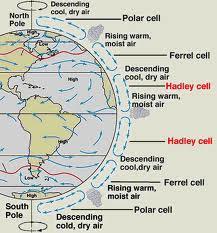
Semi-Permanent Highs and Lows
Semi-permanent highs and lows are pressure systems that last over a certain location throughout the year. They affect the climate by steering weather systems and hurricanes.
Aleutian Low
The Aleutian low is located west of Alaska in the Bering sea, near the Aleutian islands. The Aleutian low is most intense during the winter and weakens drastically in the summer. It intensifies cyclones and steers them into the Pacific Northwest.
Icelandic Low
The Icelandic low is located near Iceland and Greenland. It is similar to the Aleutian low. It is strongest in the winter and weak in the summer. It also intensifies cyclones.
Bermuda High
The Bermuda high is located in the Atlantic Ocean in the northern hemisphere around 30N. It is close to the east coast in the summer and drifts further east in the winter. It directs moist air onto the east coast during the summer. It also has a major impact on the path of hurricanes in the Atlantic and where it will make landfall. It allows the gulf stream to dip in winter and helps drive the Gulf Stream. Europeans often refer to the Bermuda High as the Azores High
Siberian High
The Siberian high is located over Russia in Siberia. It forms during the winter and is the strongest semi-permanent high in the northern hemisphere. It consists of very cold air.
North Pacific High
The North Pacific High is located in the northeast Pacific, northeast of Hawaii but west of California. It is usually strongest in the summer and shifts towards equator in the winter. The North Pacific High is responsible for dry summer in California and year round trade winds in Hawaii
South Pacific High
The South Pacific high is located in the south Pacific ocean off the coast of South America. It causes the west coast of South America to be very dry.
Thermal Low
A thermal low is not one specific pressure system, but is a type of semi-permanent pressure system. They usually occur over deserts where there is intense daytime heating, which causes the heated air to rise, creating a low. They occur during the summer. They have little to no precipitation and weak cyclonic circulation.
El Niño and La Niña
El Niño and La Niña are officially defined as sustained sea surface temperature anomalies of magnitude greater than 0.5 °C across the central tropical Pacific Ocean. When the condition is met for a period of less than five months, it is classified as El Niño or La Niña conditions; if the anomaly persists for five months or longer, it is classified as an El Niño or La Niña episode. Historically, it has occurred at irregular intervals of 2-7 years and has usually lasted one or two years.
El Niño
The first signs of an El Niño are:
1. Rise in air pressure over the Indian Ocean, Indonesia, and Australia 2. Fall in air pressure over Tahiti and the rest of the central and eastern Pacific Ocean 3. Trade winds in the south Pacific weaken or head east 4. Warm air rises near Peru, causing rain in the northern Peruvian deserts 5. Warm water spreads from the west Pacific and the Indian Ocean to the east Pacific. It takes the rain with it, causing extensive drought in the western Pacific and rainfall in the normally dry eastern Pacific.
El Niño's warm current of nutrient-poor tropical water, heated by its eastward passage in the Equatorial Current, replaces the cold, nutrient-rich surface water of the Humboldt Current, also known as the Peru Current, which support great populations of food fish. In most years the warming lasts only a few weeks or a month, after which the weather patterns return to normal and fishing improves. However, when El Niño conditions last for many months, more extensive ocean warming occurs and its economic impact to local fishing for an international market can be serious. During non-El Niño conditions, the Walker circulation is seen at the surface as easterly trade winds, which move water and air warmed by the sun towards the west. This also creates ocean upwelling off the coasts of Peru and Ecuador and brings nutrient-rich cold water to the surface, increasing fishing stocks. The western side of the equatorial Pacific is characterized by warm, wet low-pressure weather as the collected moisture is dumped in the form of typhoons and thunderstorms. The ocean is some 60 cm higher in the western Pacific as the result of this motion. Also refer to Walker Circulation model and how it relates to ENSO.
La Niña
In the Pacific, La Niña is characterized by unusually cold ocean temperatures in the eastern equatorial Pacific, compared to El Niño, which is characterized by unusually warm ocean temperatures in the same area. Atlantic tropical cyclone activity is generally enhanced during La Niña. The La Niña condition often follows the El Niño, especially when the latter is strong.
Table with La Niña and El Niño Effects
| El Niño | La Niña |
|---|---|
| Strong Equatorial Counter-Current | Strong Peruvian Current |
| Wetter than Average Winter over Florida | Higher Sea Level in the West Pacific |
| Pronounced Ridge in Polar Jet over Western North America | Stronger than Normal Subtropical Highs in Pacific |
| Drier than Average over Indonesia and Australia | Increased Snowfall in the North Western U.S. |
| Large-Scale Warming of Pacific | Oceanic Cooling of the Pacific |
Thermohaline Circulation
The term thermohaline circulation (THC) refers to the part of the large-scale ocean circulation that is thought to be driven by global density gradients created by surface heat and freshwater fluxes. The adjective thermohaline derives from "thermo-", referring to temperature, and "-haline", referring to salt content. These factors together determine the density of sea water. The thermohaline circulation is sometimes called the ocean conveyor belt, the great ocean conveyor, or the global conveyor belt. On occasion, it is used to refer to the meridional overturning circulation (often abbreviated as MOC).
Oceanic Circulation Path
Wind-driven surface currents (such as the Gulf Stream) head polewards from the equatorial Atlantic Ocean, cooling all the while and eventually sinking at high latitudes (forming North Atlantic Deep Water). The formation and movement of the deep water masses at North Atlantic Ocean creates sinking water masses that fills the ocean basins and flows very slowly into the deep abyssal plains of the Atlantic. This high latitude cooling and the low latitude heating drives the movement of the deep water in a polar southward flow. The deep water flows through the Antarctic Ocean Basin around South Africa where it is split into two routes: one into the Indian Ocean and one past Australia into the Pacific. While the bulk of it upwells in the Southern Ocean, the oldest waters (with a transit time of around 1000 years) upwell in the North Pacific. At the Indian Ocean, some of the cold and salty water from Atlantic -- drawn by the flow of warmer and fresher upper ocean water from the tropical Pacific -- causes a vertical exchange of dense, sinking water with lighter water above.
The out-flowing undersea of cold and salty water makes the sea level of the Atlantic slightly lower than the Pacific and salinity or halinity of water at the Atlantic higher than the Pacific. These characteristics of the Pacific generate a large but slow flow of warmer and fresher upper ocean water from the tropical Pacific to the Indian Ocean through the Indonesian Archipelago to replace the cold and salty Antarctic Bottom Water. This is also known as Haline forcing (net high latitude freshwater gain and low latitude evaporation). This warmer, fresher water from the Pacific also flows up through the South Atlantic to Greenland, where it cools off and undergoes evaporative cooling and sinks to the ocean floor, providing a continuous thermohaline circulation. It is known as overturning. Hence, a recent and popular name for the thermohaline circulation, emphasizing the vertical nature and pole-to-pole character of this kind of ocean circulation, is the meridional overturning circulation.
Impact on Earth's Climate
As such, the state of the circulation has a large impact on the climate of the Earth. Because of this massive circulation, extensive mixing takes place between the ocean basins, reducing differences between them and making the Earth's ocean a global system. On their journey, the water masses transport both energy (in the form of heat) and matter (solids, dissolved substances and gases) around the globe. If this system were to shut down, this changed flow would alter the climates of the entire Earth, and there would be no more circulation of salt or water. This would change the ocean habitats as well, and would affect marine life.
Representative Concentration Pathways (RCP)
Four greenhouse gas concentration (not emission) trajectory adopted by the IPCC (Intergovernmental Panel on Climate Change) for its 5th assessment report.The four RCPs, RCP2.6, RCP4.5, RCP6, and RCP8.5, are named after a possible range of radiative forcing values in the year 2100 relative to pre-industrial values (+2.6, +4.5, +6.0, and +8.5 W/m2, respectively).
Additional Topics
The following concepts were not included in the 2022 event rules for Meteorology as topics for competition, although they may be useful to understand or have been included in previous years.
Additional Topics
The Daisyworld Model is a hypothetical idea in which a planet is covered in black and white daisies. The daisies have different albedos, so the growth of both daisies affect the planet's temperature and overall population. The Daisyworld Model is a demonstration of the Gaia Theory. A great explanation of the Daisyworld Model can be found here: [1]
The angle of the Earth's axial tilt (obliquity) varies with respect to the plane of the Earth's orbit. These slow 2.4° obliquity variations are roughly periodic, taking approximately 41,000 years to shift between a tilt of 22.1° and 24.5° and back again. When the obliquity increases, the amplitude of the seasonal cycle in insolation (INcoming SOLar radiATION) increases, with summers in both hemispheres receiving more radiative flux from the Sun, and the winters less radiative flux. As a result, it is assumed that the winters become colder and summers warmer. But these changes of opposite sign in the summer and winter are not of the same magnitude. The annual mean insolation increases in high latitudes with increasing obliquity, while lower latitudes experience a reduction in insolation. Cooler summers are suspected of encouraging the start of an ice age by melting less of the previous winter's ice and snow. So it can be argued that lower obliquity favors ice ages both because of the mean insolation reduction in high latitudes as well as the additional reduction in summer insolation. We are presently in a period of decreasing obliquity.
The Earth's orbit is an ellipse. The eccentricity is a measure of the departure of this ellipse from circularity. The shape of the Earth's orbit varies from being nearly circular (low eccentricity of 0.005) to being mildly elliptical (high eccentricity of 0.058) and has a mean eccentricity of 0.028 (or 0.017 which is current value). The major component of these variations occurs on a period of 413,000 years (eccentricity variation of ±0.012). A number of other terms vary between 95,000 and 136,000 years, and loosely combine into a 100,000-year cycle. The present eccentricity is 0.017.
Precession is the change in the direction of the Earth's axis of rotation relative to the fixed stars, with a period of roughly 26,000 years. This gyroscopic motion is due to the tidal forces exerted by the sun and the moon on the solid Earth, associated with the fact that the Earth is not a perfect sphere but has an equatorial bulge. The sun and moon contribute roughly equally to this effect. In addition, the orbital ellipse itself precesses in space (anomalistic precession), primarily as a result of interactions with Jupiter and Saturn. This orbital precession is in the opposite sense to the gyroscopic motion of the axis of rotation, shortening the period of the precession of the equinoxes with respect to the perihelion from 25,771.5 to ~21,636 years.
This image is a station model. It can tell you many different things, like wind speed, wind direction, temperature, dew point, current weather, cloud cover, and pressure, given that you know how to read and interpret it. Some symbols have more information than others on them, but here is a basic overview:
This is what tells you information about the wind. The direction the stick faces shows the wind direction, and how many lines on the end of it show the wind speed. A half line signifies five knots, a full line ten knots, and a bold line fifty knots. Here is a key to making and reading station models. It is highly recommended to add this on to your note sheet. |



